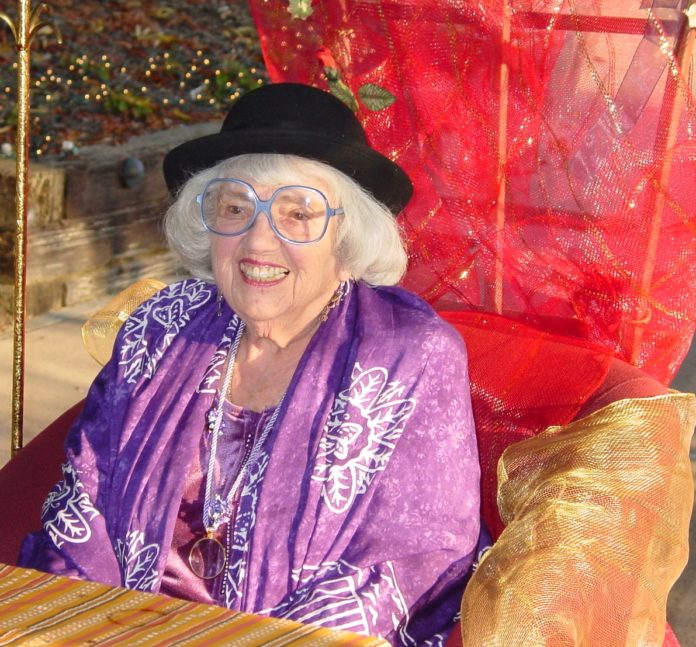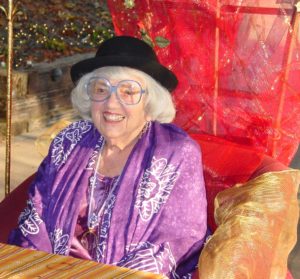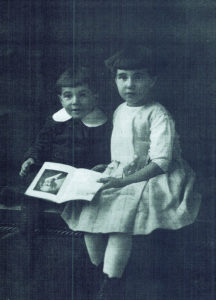
Behind every movement is a person, and for the wide-reaching effort known as Earth Day, it was none other than a Toledoan who helped create momentum for its introduction to the world.
In the late 1960s, when “being green” meant only a color to most people, California transplant Selma Rubin “basically terrified a lot of people,” according to Nick Welsh, executive editor of Santa Barbara (California) Independent.

Some Internet sources cite Rubin as the co-founder of Earth Day, but that label appears to be slightly inaccurate. Clearly, her initial environmental efforts were enormous, but actual credit for the Earth Day name and official celebration point elsewhere.
Still, her far-reaching contribution to what led to the formation of Earth Day is documentable, and nearly a half-century later, its effects are still felt.
Toledo born and raised
Rubin was born March 28, 1915, and would have turned 100 this year. She died March 9, 2012, at age 96 at her home in Santa Barbara. Her body was cremated; half of her ashes remain in Santa Barbara, while the other half are in Mexico with her friend and fellow activist, Rogelio Trujillo.
She and her husband Bill moved to Santa Barbara from Los Angeles in 1964, but it was Toledo she originally called home.
“I knew she was from Ohio,” said Linda Krop, chief counsel with the Environmental Defense Center, located in Santa Barbara. “She would talk proudly about her past. She was very, very feisty.”
In 1901, Rubin’s father, Morris Newman, came to the United States with his father and two brothers as Russian immigrants, eventually finding their way to Toledo. Newman had previously made hats for the Russian army, so in Toledo he also became a cap maker and owned a variety store Downtown at Huron and Adams streets. Throughout her life, Rubin was rarely seen without a hat.
“Her strength, her forcefulness and her passion grew out of the legacy that was our family’s roots in Russia,” said Michael Newman, Rubin’s nephew, who spoke via phone from his home in Modesto, California.
Rubin attended Scott High School and then the University of Toledo, where she majored in home economics before answering the call to serve in the U.S. Women’s Army Corps — then the women’s auxiliary unit branch of the U.S. Army — during World War II from 1943-45.
After the war, her entire family moved to Los Angeles, all seeking new opportunities. It was there she married her first husband in 1948, who died unexpectedly in 1955. Then, she met and married Bill Rubin in 1962.
Mother of Earth Day
The warm, supportive and tactical Rubin, a professional bookkeeper and accountant who some consider one of the “Mothers of Earth Day,” took action at the Santa Barbara oil spill of 1969, the largest in U.S. waters at the time.
Up to 100,000 barrels of crude oil spilled into the Santa Barbara Channel and onto its beaches over 10 days, killing thousands of sea birds, dolphins, elephant seals and sea lions.
Outrage ensued, and as good can arise from bad, it was then that Selma Rubin the activist was born. Although she had been involved in environmental causes prior to 1969, Rubin kicked her activism into high gear at that point, and never stopped until the day she died, according to Dave Davis, president and CEO of the Community Environmental Council, based in Santa Barbara.
Earth Day’s origins are somewhat widespread because the action-minded, community event we know today started more as an educational forum.
The name is credited to a former U.S. senator and Wisconsin governor, Gaylord Nelson, who was moved by the ’69 oil spill and announced his idea to national media, working with another congressman to promote events nationally.
Nelson summoned Denis Hayes to organize the first event April 22, 1970. It focused on American environmental issues as a teach-in at 2,000 colleges and universities, 10,000 primary and secondary schools and hundreds of communities. That event later morphed into what we know today as Earth Day.
However, also in 1969, peace activist John McConnell proposed a day to honor the Earth and promote peace, to be celebrated March 21, 1970, the first day of spring in the Northern Hemisphere. His pitch to the UNESCO Conference in San Francisco resulted in an Earth Day proclamation by that city.
“[Rubin] was the ‘mother’ of the 20 million-person national event only in the sense that Rachel Carson was or Margaret Mead or Anne Ehrlich — allied people who wrestled with issues that became strands in the fabric that Earth Day helped weave into a unified ‘environmental’ cause,” said Hayes, who now serves as president of the Bullitt Foundation in Seattle, an organization devoted to protecting and restoring the environment of the Pacific Northwest.

“There were lots of folks fighting against [many problems] before Earth Day, but they mostly didn’t think of themselves as connected by shared values. Earth Day helped them realize that they were all part of the same community — something that Selma, with her wide range of interests, doubtless already knew.”
But even before Nelson’s and McConnell’s events was a Rubin-led affair that likely paved the way for Earth Day as we know it today.
In the wake of the Santa Barbara oil spill, Rubin enlisted thousands of others who responded with grassroots action against a consortium of oil companies, resulting in environmental legislation that formed the framework for the modern environmental movement.
“On the anniversary — Jan. 29, 1970 — there was, if you will, an anniversary celebration which was held here which we all considered basically being the birth of the modern day environmental movement,” Davis said. “Selma was there and organized that as part of the Jan. 29 committee, and invited a number of people, including those folks that basically started Earth Day. And so yes, you could consider her almost the mother of Earth Day in many, many ways.”
After these events, Hayes founded the Earth Day Network and served as event chairman for anniversaries in 1990 and 2000. Earth Day is now the world’s most widely observed secular holiday.
A force of nature
If Mother Nature is a force to be reckoned with, then Rubin was its sidekick.
“Selma was involved with the Community Environmental Council the entire period of her life, up until the day she died,” Davis said. “But Selma never retired. Even when she was [in her 90s] she was sitting on boards for over 25 nonprofits locally. She was an incredible force to be reckoned with.”
“Selma was a force of nature,” agreed Welsh, who met her in 1983.
Besides the oil spill response, another of Rubin’s major efforts came in 1970, when she thwarted a developer from building 1,500 condos along the Gaviota Coast in California. Such action was unusual, as there were no applicable environmental laws at that time, and she won despite facing accusations of petition signature forgery and election fraud — convictions for which could have resulted in 28 years in prison. The Gaviota Coast eventually became a natural preserve, where Rubin has a special park bench marked in her honor.
“Her political genius was to be able to take the energy of the moment and being very good at having an organizational response,” Welsh said. “She wasn’t into big money, but she knew big money. Santa Barbara has a lot of rich, wealthy people who are interested in saving the world, and they’re also concerned about how their money is spent. She provided that assurance, and directed things toward competent people. She helped create what everybody here now takes for granted.”
Beyond the environment
Rubin devoted much of her energy to the environment, but she also cared for people, Newman said. He recalled a story about Rubin when she was just a teenager.
“One time, another fellow [student] didn’t have a coat, so Selma took hers off and gave it to her,” Newman said. “She never did anything for herself.”
When her husband Bill died from Alzheimer’s disease in 1989, it was again Rubin who felt a need to support others who were suffering. After President Ronald Reagan announced in 1994 that he had been diagnosed with Alzheimer’s, Rubin ended up working closely with the Ronald and Nancy Reagan Research Institute to find a cause for the disease.
Her close political ties led to an invitation to attend President Bill Clinton’s 1997 inauguration, but a broken leg prevented her attendance.
In all, Rubin helped start over 40 organizations that were dedicated to the environment and social justice.
Though Rubin had no children of her own, she spread her love of people and issues wherever she went, Newman said.
“Her children,” he said. “were her causes.”






















